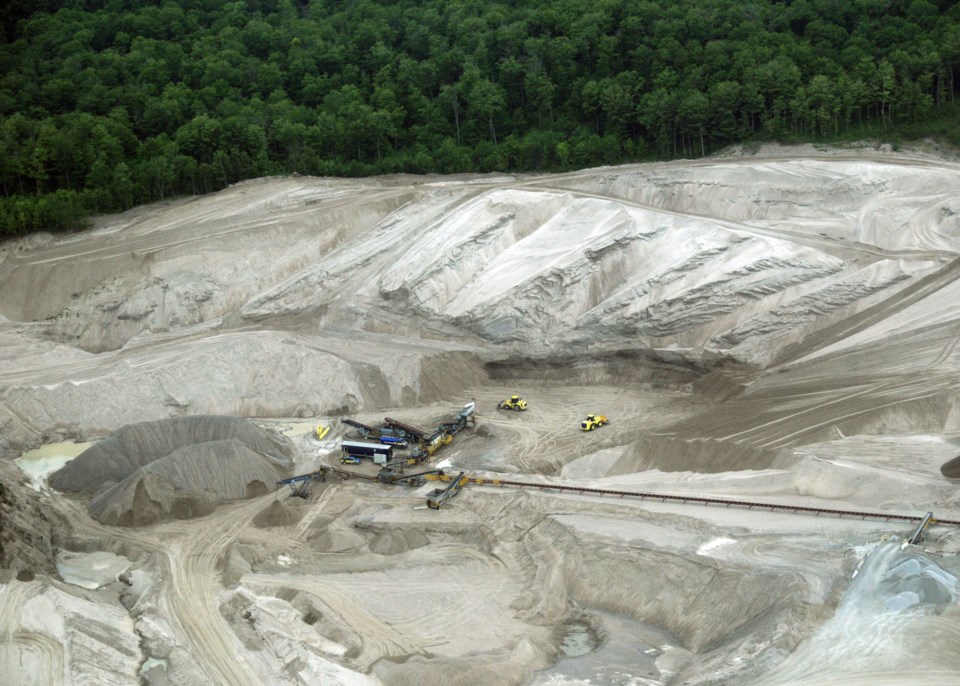This week’s column is a bit different, as I’m stepping aside for the usual ‘what’s living in your backyard’ and tackling the complex issue of water taking.
With the recent proposal of a local sand pit company to pump “up to 454 litres of prime water a minute” to wash sand of impurities, there has been justifiable concern expressed by many.
The immediate emotional response to this proposal to extract pure water from deep aquifers on the Oro Moraine has been, from many, that it is hare-brained, irrational, stupid, unnecessary, unbelievable, arrogant, ignorant. Well, I’m sure you get the drift. There seems to be no justifiable reason to approve this request for water taking.
So, just what is this water-taking-permitting process all about? Now we wade into the murky history of who owns the water and who can do what with it.
As a resident of Ontario, you ‘own’ the water, all the water, under the phrase ‘right in common,’ which means water cannot be privately owned. Sounds good so far. But people cannot be trusted to act responsibly on their own, so government was invented to act on behalf of the people to ensure abuse of this shared right was respected.
People need water for a variety of uses beyond just a quenching gulp on a hot summer’s day. Agriculture, industry and a variety of commercial operations need water, and lots of it, to do their thing. From irrigating golf courses to cooling hot machinery, water is diverted from its natural course and flows into pumps and buildings. The quality of water that comes out the other end is equivalent to what comes out our ‘other end.’
To make things fair, the Ontario government has come up with a permitting system to monitor who takes how much. According to the Water Resources Act, if you take less than 50,000 litres per day, no problem, go for it, but 50,001 or more litres of water per day? Time to visit the ol’ website for appropriate permits to take water.
There are three categories of ‘take,’ ranging from a bit to a fair amount to a huge amount. You have to pay a fee that is scaled to the level of your request, ranging from a few hundred dollars up to $3,000 for a Category 3 request.
Note that you have to pay an annual fee for this water that nobody owns, at a rate of $3.71 per every million litres of water you extract in a year. You read that correctly: just under four bucks per million litres. I guess that covers the cost of the government staffers who process the paperwork.
Unless you are a water-bottling company and are selling this publicly owned water for a personal profit; then you have to pay an additional $500 per every million litres stolen — er, I mean taken — per year. I guess this covers the cost of benefits and pension for the aforementioned government workers.
A Category 3 request is one that “water takings are anticipated to have the highest potential for causing unacceptable environmental impact or interference.” The word ‘unacceptable’ is right in there. So, why are these proposals even being accepted for review?
But, to be fair, I guess, Category 3 proposals are entertained. However, there is a requirement for public comment, which is a good thing. Anyone can go to the Environmental Registry of Ontario and submit a comment. (In this case of sand washing, it is No. 019-7446.) Do take the time to read their guidelines for making a comment. Basically, you can’t say anything negative or your comment will not be accepted. Oh, the frustration!
So, just what is this ‘sand washing’ anyway? The Oro Moraine was created by the effluent coming off a melting glacier, and the flow of meltwater carried within it many different-sized particles of pulverized rock. The lighter or smaller the particle, the farther it was carried before being deposited in a heap with other like-sized particles. This natural sorting left gravel in one place, sand in another, and silt way off in the distance.
But nature wasn’t perfect, so some silt stayed with the sand, and some sand stayed with the gravel, which means pit operators of today must finish this sorting process by blasting the extracted sand with more water to create really, really clean sand particles, which are essential when mixed with concrete to make strong cement.
The ‘waste water’ from this cleaning process is now highly contaminated with the silt particles, giving us muddy water. Nobody wants to buy muddy water, so what to do with it? It goes to a settling pond, where the silt falls to the bottom and the rest of the pond water gets a chance to evaporate.
There are still so many more questions and non-answers to this water-taking dilemma. Our local members of provincial parliament have proven they don’t want to hear from you about petty things like a sustainable source of drinking water, so what can you do?
What you can do, and must do, is submit a comment to the Environmental Registry of Ontario. If all you do is wring your hands, moan and complain, and write emotional letters to the editor, nothing will change. Ya gotta play their game by their rules.
Oh, and my parting shot: This proposal will very likely be accepted — when the company makes it look like it ‘listened and responded’ and has lowered its ask from 454 litres a day to, say, 300 litres a day. “See how committed we are to supporting our community?” That lower number (which I have made up in this case) is probably what they wanted in the first place. Their game, their rules.



